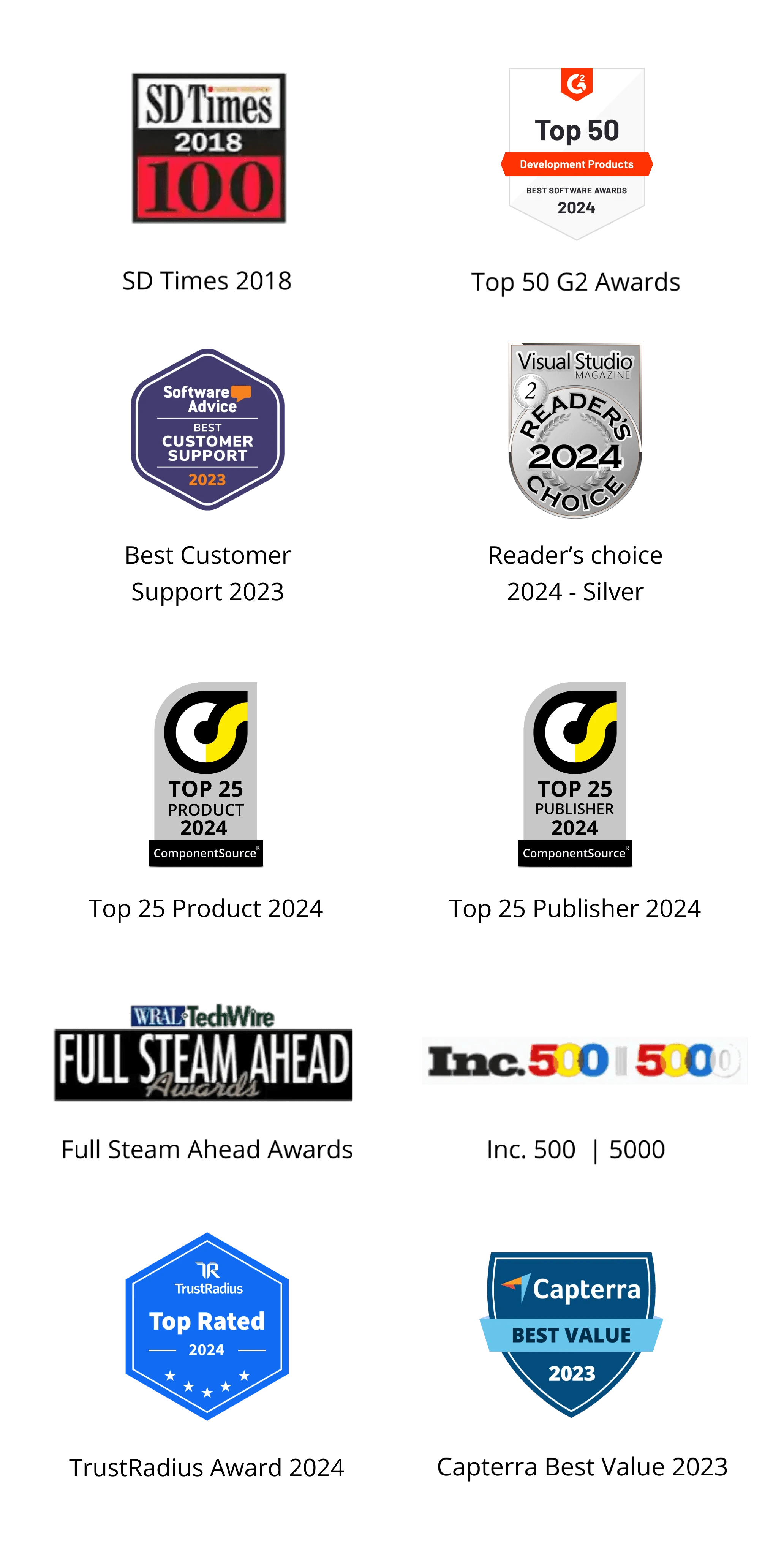Trusted by the world’s leading companies

Overview
The Angular Range Slider is an HTML5 input control that is used to select a value or range of values. Select a relative quantity value by moving a thumb along a bar. The control has major/minor ticks, thumb, and tooltip that can be fully customized. Also, the control can be aligned horizontally or vertically.
Numeric Range Slider
Select a range of numeric values intuitively by using two handles. A range slider usually fills a color between the handles to indicate selection.


Single value Slider
Select a specific numeric value from a range. The fill selection option indicates the selected range visually.
Formatting values
Users can format slider values with a prefix (e.g. $10) and postfix (e.g. 10 km), and prettify the given values (e.g. 10000 to 10,000).

Custom slider
Users can customize the slider as needed and change it to a date range slider, time range slider, price range slider, rating slider, custom values, and more.
Vertical slider
The Angular Range Slider component can be aligned both horizontally and vertically.


Floating and negative values
The Angular Range Slider component follows the HTML5 input type range standards, and supports numbers, and also floating and negative values regardless of the format.
Template-driven and Reactive Form Slider
Seamlessly supports Angular template-driven forms, and reactive forms.

Tooltips
The tooltip displays slide value information when the mouse pointer moves the thumb over the bar. The same can be done on mobile devices by touch events.

Snap to increment
Allows users to select a value or range between precise intervals by configuring the step interval value.
UI customization
The Angular slider bar, thumbs, ticks, and tooltips can be completely customized using CSS and callback events.
Touch-friendly and responsive
The Angular Range Slider control recognizes touch gestures, allowing the user to swipe left or right to change the value of the slider. The responsive, touch-friendly design provides the best user experience on all phone, tablet, and desktop form factors.

Built-in and customizable themes
Several built-in, Sass-based themes are available: Fluent, Tailwind CSS, Bootstrap 5, Bootstrap, Material, and high contrast. Users can customize these themes by either overriding the existing Sass styles or creating custom themes using the Theme Studio application.
Globalization and Localization
The Angular Range Slider control is designed to work in multiple cultures, and can also be localized for a specific culture.

Web Accessibility
- Fully supports WAI-ARIA accessibility that helps sliders be accessed by on-screen readers and assistive devices.
- Designed UI visual elements such as foreground color, background color, line spacing, text, and images based on the WCAG 2.0 standard.
- Follows WAI-ARIA best practices for implementing keyboard interaction.
Developer-friendly APIs
Developers can customize all UI elements and control its behaviors. A rich set of developer-friendly APIs provides the best user experience.
Angular Slider code example
Easily get started with the Angular Slider using a few simple lines of HTML and TS code example as demonstrated below. Also explore our Angular Slider example that shows you how to render and configure a Slider in Angular.
<div id='content'>
<div class="control-styles">
<ejs-slider id='default'></ejs-slider>
</div>
</div>import { Component } from '@angular/core';
@Component({
selector: 'my-app',
templateUrl: 'app/template.html',
styleUrls:['index.css'],
})
export class AppComponent {
}Other supported frameworks
Slider is also available in Blazor, React, Vue, and JavaScript frameworks. Check out the different Slider platforms from the links below:
Not sure how to create your first Angular Slider? Our documentation can help.
I’d love to read it now145+ ANGULAR UI COMPONENTS
Frequently Asked Questions
Why should you choose Syncfusion Angular Slider?
The Syncfusion Angular Slider is a custom range-type HTML5 input component which provides the following:
Users can customize the slider bar, thumbs, ticks, and tooltips.
- Labels can be customized with negative, fractional, date, time, and custom values.
- Format values according to your need.
- Customize the range slider type as a date range slider, time range slider, price range slider, rating slider, custom values, and more.
- One of the best Angular Sliders in the market that offers a feature-rich UI to interact with the software.
- Simple configuration and APIs.
- Supports all modern browsers.
- Mobile-touch friendly and responsive.
Extensive demos, and documentation to learn quickly and get started with the Angular Slider.
Where can I find the Syncfusion Angular Slider demo?
You can find our Angular Slider demo, which demonstrates how to render and configure Slider.
Can I download and utilize the Syncfusion Angular Slider for free?
No, this is a commercial product and requires a paid license. However, a free community license is also available for companies and individuals whose organizations have less than $1 million USD in annual gross revenue, 5 or fewer developers, and 10 or fewer total employees.
How do I get started with Syncfusion Angular Slider?
A good place to start would be our comprehensive getting started documentation.
Our Customers Love Us


 Documentation
Documentation
Awards
Greatness—it’s one thing to say you have it, but it means more when others recognize it. Syncfusion® is proud to hold the following industry awards.














